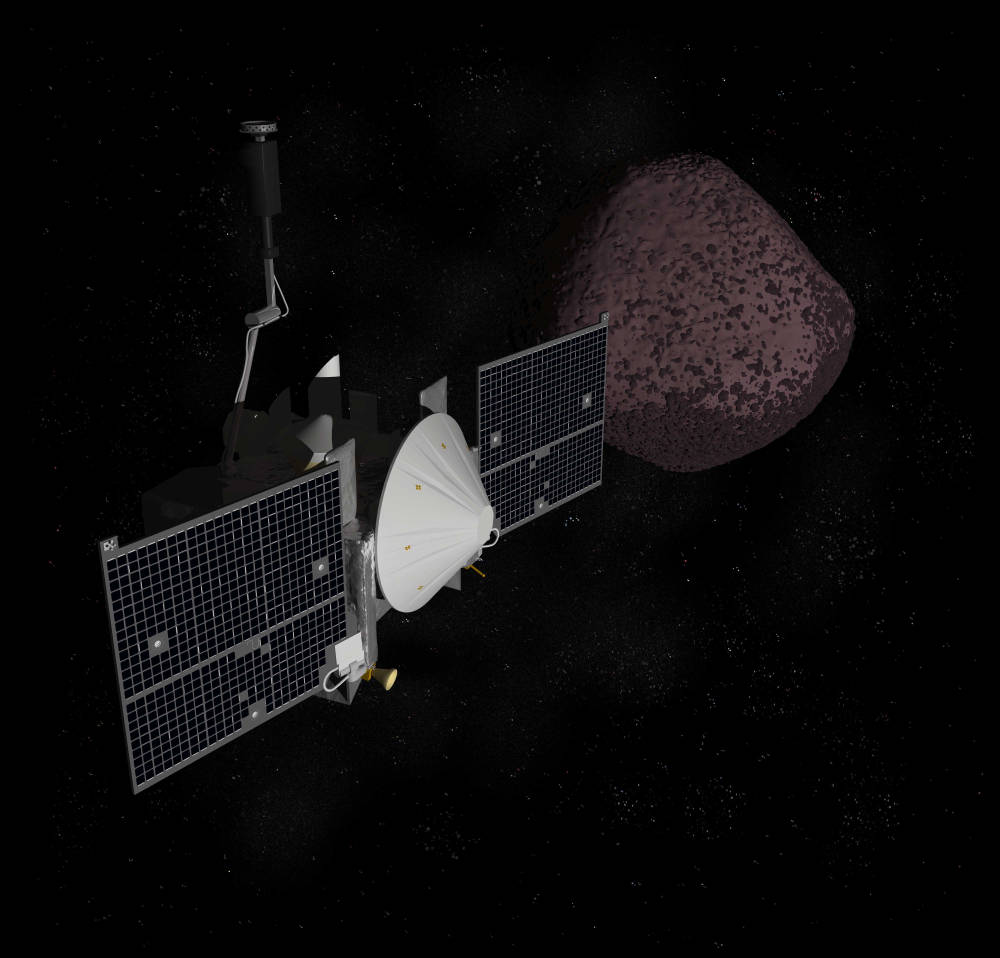NASA’s first-ever asteroid sample-collecting spacecraft OSIRIS-REx has had its mission extended – and will next visit Apophis, a near-Earth object expected to fly as close as 20,000 miles to our home planet in 2029.
The 340-metre-wide space rock was discovered in 2004 and made headlines after astronomers predicted it could strike Earth at the end of the decade.
Further calculations saw doomsday pushed back to 2036, then again 2068. Scientists now believe the asteroid won’t potentially trouble Earth for at least another hundred years.
But Apophis remains of interest because it will make a very close flyby in five and a half years, when it will come closer to Earth than some artificial satellites and come ten times closer to our planet than the Moon. Close encounters with asteroids as large as Apophis reportedly occur just once in 7,500 years.
Dani DellaGiustina, an assistant professor at the University of Arizona in the US, was deputy principal investigator of OSIRIS-REx as it collected samples from asteroid Bennu; that out-of-this-world material was sent to Earth and arrived here the other month to be studied. Now that the mission and craft has been renamed OSIRIS-APEX, and the probe is off to Apophis, DellaGiustina will be principal investigator for this latest phase of the project.
In a statement she opined, “The close approach allows scientists to study interactions with Earth’s gravitational forces, specifically tidal forces that could disturb its surface to reveal what lies beneath.”
“There might be landslides or particle ejections that create a comet-like tail. The close approach is a great natural experiment,” she added.
Apophis is an S-type asteroid, made up of silicate materials, plus nickel and iron. OSIRIS-REx’s target, Bennu, is a C-type asteroid mostly made of carbon-based compounds. Studying both types of space rocks will give scientists a better understanding of how planets formed in the Solar System.
“We know that tidal forces and the accumulation of rubble pile material are foundational processes that could play a role in planet formation. They could inform how we got from debris in the early solar system to full-blown planets. Our best guess right now is that Apophis is, indeed, a rubble pile,” DellaGiustina said.
Having sent back to Earth a cone-shaped capsule containing regolith collected from Bennu’s surface, OSIRIS-Rex – sorry, OSIRIS-APEX – will reach Apophis on April 13, 2029 and will turn on its cameras eleven days beforehand to capture the approach.
“We learned a lot at Bennu, but now we’re armed with even more questions,” said Amy Simon, OSIRIS-APEX mission project scientist and a researcher from NASA’s Goddard Space Flight Center. They want to figure out how dense or porous Apophis is, and the strength of its materials and collect data that could help inform future planetary defence missions.
Meanwhile, scientists at NASA continue to analyze samples collected from Bennu. They have already collected 70.3 grams of rocks and dust lodged outside the spacecraft’s capsule, but are struggling to get its TAGSAM (Touch-and-Go Sample Acquisition Mechanism) head open to access the rest of the asteroid material.
“After multiple attempts at removal, the team discovered two of the 35 fasteners on the TAGSAM head could not be removed with the current tools approved for use in the OSIRIS-REx glovebox,” NASA said in a statement. “The team has been working to develop and implement new approaches to extract the material inside the head, while continuing to keep the sample safe and pristine.”
To prevent any contamination, researchers must open the TAGSAM head in a special closed compartment filled with nitrogen. They still have not managed to crack the two remaining fasteners on the device to scrape the remaining asteroid material, according to NASA’s latest update. ®

Dr. Thomas Hughes is a UK-based scientist and science communicator who makes complex topics accessible to readers. His articles explore breakthroughs in various scientific disciplines, from space exploration to cutting-edge research.








